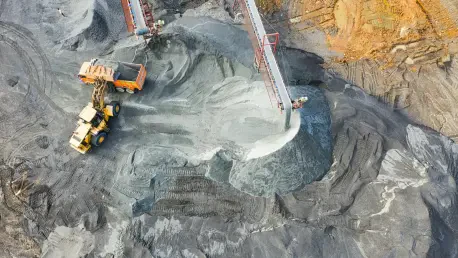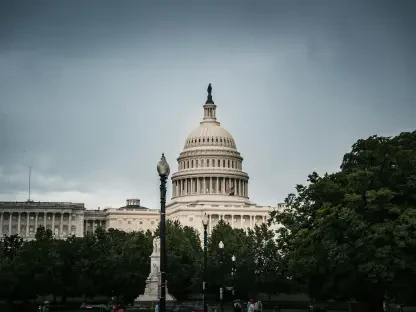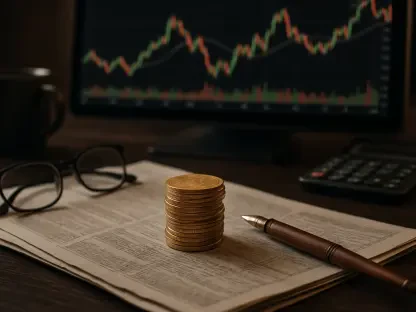The global lithium market, essential for powering the electric vehicle (EV) revolution and energy storage solutions, has been thrust into uncertainty with the temporary suspension of operations at Contemporary Amperex Technology Co. Ltd. (CATL)’s lithium mine in Jiangxi province, China, earlier this year. As a dominant force contributing 3% of the world’s lithium production, CATL’s operational halt due to China’s stricter mining regulations under the revised Mineral Resources Law has sent tremors through commodity markets. This disruption isn’t merely a localized setback; it’s a glaring signal of the vulnerabilities in a supply chain critical to the green energy transition. With lithium carbonate prices spiking past 80,000 yuan ($11,128) on the Guangzhou Futures Exchange, the industry faces pressing questions about stability, resilience, and the path forward for a resource so vital to electrification goals.
Market Dynamics and Supply Chain Challenges
Price Volatility and Market Response
The abrupt suspension of CATL’s lithium mine operations sparked an immediate and dramatic reaction in global markets, with lithium carbonate prices surging to unprecedented levels. This sharp increase reflects the market’s acute sensitivity to supply interruptions, especially from a key player like CATL. In response, exchanges swiftly implemented position limits to curb speculative trading and stabilize volatility. Such measures, while necessary, highlight the underlying fragility of a market heavily reliant on a few major producers. The price spike not only affects manufacturers of EV batteries and energy storage systems but also reverberates through related industries, raising production costs and potentially slowing the adoption of sustainable technologies. This situation underscores how even short-term disruptions can have outsized effects on pricing dynamics, pushing stakeholders to reassess risk management strategies and contingency plans in a landscape where demand continues to outpace supply.
Beyond the immediate price effects, the market’s reaction to CATL’s suspension reveals deeper structural issues within the lithium trade. Investors and analysts have noted a heightened sense of uncertainty, as the price surge prompted a flurry of speculative activity before regulatory interventions took hold. This volatility has also strained relationships between suppliers and manufacturers, with downstream companies facing squeezed margins and delayed production schedules. Furthermore, the event has drawn attention to the lack of transparency in pricing mechanisms within the lithium market, where futures exchanges often struggle to balance supply shocks with speculative interests. Governments and industry bodies are now under pressure to develop more robust frameworks to prevent such erratic price movements in the future, ensuring that the transition to green energy isn’t derailed by short-term market instability. This episode serves as a critical reminder of the need for systemic reforms to safeguard economic stability.
Vulnerabilities in Concentrated Supply Chains
The suspension at CATL’s mine has laid bare the precarious nature of the global lithium supply chain, where over 50% of reserves are concentrated in the “Lithium Triangle” of Argentina, Bolivia, and Chile, and China holds a dominant position in processing. This heavy reliance on a handful of regions creates a bottleneck that amplifies the impact of any disruption, whether due to regulatory shifts or operational challenges. The incident has heightened concerns among industry leaders about the risks of over-dependence on specific geographies, particularly as the demand for lithium in EV batteries and renewable energy storage systems skyrockets. With China processing a significant portion of the world’s lithium, geopolitical tensions or policy changes in the region can trigger widespread consequences, affecting everything from production timelines to end-user costs. This vulnerability has sparked urgent discussions on how to mitigate such risks through strategic planning and international cooperation.
Compounding these supply chain concerns is the lack of diversified infrastructure to handle sudden shocks like the one caused by CATL’s operational halt. Many countries and companies have yet to establish alternative sourcing or refining capacities, leaving them exposed to fluctuations in supply from dominant players. This concentration also poses challenges for smaller manufacturers who lack the resources to absorb price hikes or secure long-term contracts with multiple suppliers. Additionally, the environmental and social implications of mining in concentrated regions often go unaddressed, further complicating efforts to stabilize the supply chain. As demand projections continue to climb, with global needs for lithium expected to triple by the end of the decade, the industry must confront these structural weaknesses head-on. Building resilience will require not just investment in new mining regions but also a rethinking of how supply chains are structured to withstand unexpected disruptions.
Strategic Opportunities and Industry Evolution
Investment Prospects in Upstream Assets
Amid the turbulence caused by CATL’s mine suspension, a silver lining has emerged in the form of investment opportunities within upstream lithium assets. Companies such as Zijin Mining, Albemarle, and Sigma Lithium have caught the eye of investors due to their geographically diverse portfolios and alignment with sustainability trends. With projections estimating domestic battery capacity demand to reach 1,000 GWh in the U.S. and 1,200 GWh in the EU by 2030, these firms are strategically positioned to meet the growing appetite for lithium. The current market upheaval has underscored the value of undervalued assets in regions less prone to regulatory or geopolitical risks, making them attractive targets for long-term investment. This shift in focus toward upstream opportunities reflects a broader recognition that securing stable lithium supplies is paramount for sustaining the electrification momentum across industries.
Furthermore, the investment landscape is being shaped by a growing emphasis on companies that prioritize sustainable practices alongside profitability. Firms like Sigma Lithium, with innovative water-efficient extraction methods, resonate with the increasing demand for environmentally responsible operations. This trend is bolstered by financial incentives and regulatory support in key markets, which aim to channel capital into entities that can contribute to regional supply security. The projected growth in lithium demand also highlights the potential for significant returns, particularly for investors willing to navigate short-term volatility for long-term gains. As market dynamics evolve, the focus on upstream assets signals a proactive approach to addressing supply chain gaps, ensuring that the industry can keep pace with the rapid expansion of EV and energy storage sectors. This strategic pivot could redefine how capital flows into the lithium market over the coming years.
Technological and Sustainable Innovations
Technological advancements are playing a pivotal role in reshaping the lithium industry, especially in the wake of disruptions like CATL’s mine suspension. Innovations such as Direct Lithium Extraction (DLE) and advanced recycling techniques are revolutionizing production by slashing energy consumption by nearly 89% and cutting CO2 emissions by over 80%. These breakthroughs offer a cleaner, more efficient alternative to traditional mining methods, addressing some of the environmental concerns that have long plagued the sector. As demand for lithium continues to soar, these technologies provide a pathway to meet supply needs without exacerbating ecological damage. Industry stakeholders are increasingly viewing such innovations as essential for maintaining competitiveness, particularly in a market where regulatory scrutiny and public expectations around sustainability are intensifying.
In parallel, the push for environmental, social, and governance (ESG) standards is becoming a cornerstone of the lithium industry’s evolution. Companies adopting sustainable practices, such as closed-loop water systems and compliance with stringent regulations like the EU’s Battery Directive, are finding themselves better positioned to attract investment and secure partnerships. This shift is not merely a response to external pressures but a strategic move to align with global electrification goals that prioritize long-term environmental stewardship. The integration of ESG principles into operational frameworks also helps mitigate risks associated with community opposition and regulatory penalties, fostering a more stable business environment. As the industry navigates the fallout from events like the CATL suspension, leveraging technology and sustainability will be crucial for building a more resilient and ethically sound lithium market that can support the green energy transition effectively.
Policy and Global Shifts Toward Resilience
Government Initiatives for Regional Resilience
In response to the supply chain risks exposed by CATL’s operational halt, governments worldwide are intensifying efforts to bolster domestic lithium production and reduce reliance on concentrated processing hubs like China. The U.S. Inflation Reduction Act and the EU’s Critical Raw Materials Act represent landmark policies aimed at fostering regional resilience. These initiatives set ambitious targets, such as producing 760,000 metric tons of lithium carbonate equivalent (LCE) in the U.S. and 880,000 metric tons in the EU by 2030, reflecting a clear commitment to self-sufficiency. By providing financial incentives and regulatory support, these measures encourage the development of local mining and refining capabilities, aiming to insulate economies from global supply shocks. This policy shift marks a significant departure from previous dependence on foreign resources, prioritizing strategic autonomy in critical materials essential for the energy transition.
Additionally, these governmental efforts are fostering collaboration between public and private sectors to accelerate the build-out of domestic supply chains. Partnerships are being forged to streamline permitting processes, fund research into alternative extraction methods, and establish recycling programs that can reclaim lithium from used batteries. Such initiatives not only address immediate supply concerns but also lay the groundwork for a circular economy in the lithium sector. The focus on regional production is also driven by national security considerations, as access to critical minerals becomes a geopolitical priority amid rising tensions. While challenges remain, including the time and capital required to scale up operations, the momentum behind these policies signals a transformative era for the industry. The CATL suspension has acted as a catalyst, galvanizing action to ensure that future disruptions have a diminished impact on national economies and electrification goals.
Rise of Emerging Markets
Emerging markets in Southeast Asia, South America, and Africa are increasingly stepping into the global lithium spotlight, offering a counterbalance to traditional supply hubs. With their combined market share projected to double from 5% last year to 10% by 2030, these regions are becoming vital players in diversifying the lithium industry. Countries in these areas possess untapped reserves and are attracting investment due to favorable mining conditions and lower operational costs. This trend toward geographic diversification is seen as a critical step in reducing over-reliance on dominant regions like China and the Lithium Triangle, enhancing overall supply chain stability. The growing role of emerging markets also aligns with global efforts to create a more balanced industry structure, mitigating the risks associated with localized disruptions such as the one experienced by CATL.
Moreover, the rise of these markets is accompanied by unique challenges and opportunities that could shape the future of lithium production. Many of these regions are working to establish regulatory frameworks that balance resource extraction with environmental protection and community benefits, learning from past mistakes in more established mining areas. International partnerships and foreign direct investment are playing a key role in developing infrastructure and expertise, ensuring that these markets can scale up responsibly. The increased presence of emerging players also fosters competition, which could drive innovation and keep prices in check as supply grows. While the road ahead involves navigating political and logistical hurdles, the shift toward a more inclusive global lithium market holds promise for long-term security. Reflecting on the CATL suspension, it’s evident that such diversification efforts are a necessary response to past vulnerabilities, paving the way for a more robust industry.
Reflecting on a Path Forward
Looking back, the temporary suspension of CATL’s lithium mine in Jiangxi province earlier this year acted as a pivotal moment that exposed both the fragilities and potential within the global lithium market. It brought to light the urgent need for diversified supply chains and catalyzed a renewed focus on sustainability and technological innovation. As the dust settled, the event prompted actionable steps that continue to shape the industry. Stakeholders are now encouraged to prioritize investments in emerging markets and upstream assets to spread risk, while embracing advancements like Direct Lithium Extraction to meet demand sustainably. Governments must sustain momentum with policies that support regional production, ensuring that critical materials remain accessible despite global uncertainties. Moving forward, collaboration across borders and sectors will be essential to build a resilient framework, turning past disruptions into a foundation for a stronger, more adaptable lithium industry that can power the green energy future.









